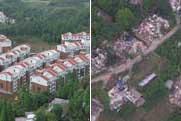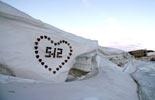World
U.S. presidential hopefuls to face 1st real test in Iowa
Source: Xinhua | 01-03-2008 16:49
DES MOINES, the United States, Jan. 2 (Xinhua) -- The battle for the next U.S. presidency started probably by the end of November 2006, but the first real test will come on the night of Jan. 3 in the midwestern state of Iowa.
Pre-election polls can reflect strength of a candidate, but some results are conflicting and polls are not real elections anyway. With all the major candidates making final pushes in Iowa Wednesday, three latest polls showed no clear leader in the state in the run-up to Thursday's caucuses.
The final Des Moines register poll before caucuses showed among Democrats, Sen. Barack Obama (D-IL) is leading with 32 percent, followed by Sen. Hillary Clinton (D-NY) with 25 percent and former Sen. John Edwards (D-NC) with 24 percent.
On the GOP side, former governor of Arkansas Mike Huckabee is leading former governor of Massachusetts Mitt Romney with 32 percent-26 percent in Iowa, followed by Sen. John McCain (R-Ariz.) with 13 percent.
However, a CNN poll shows Clinton at 33 percent; Obama at 31 percent and Edwards at 22 percent. On the GOP side, the poll has Romney at 31 percent and Huckabee at 28 percent, former Sen. Fred Thompson (R-Tenn.) at 13 percent, McCain at 10 percent and former mayor of New YOrk Rudy Giuliani, 8 percent.
A GAME TOO CLOSE TO CALL
With the competitions in both parties still too close to call, the leading candidates raced between colleges and small towns to make their last pitches. On the Republican side, Romney flew two dozen reporters across Iowa for a series of events, ending a hyper-organized Hawkeye State effort that is now threatened by Huckabee's unconventional campaign.
Democratic front-runners Clinton, Obama and Edwards closed out their year-long debate on experience vs change. All of the candidates exhibited exhaustion and a bit of desperation -- the natural outcomes of a presidential campaign that began earlier and with more intensity than ever before but one that has not produced an obvious front-runner on either side.
As the candidates sprinted for the finish line, there was an unmistakable intensity gap between the parties.
In Coralville, near the University of Iowa, about 1,500 Iowans packed into a hotel ballroom on Wednesday afternoon for Obama. Meanwhile, Clinton wooed 1,000 in nearby Cedar Rapids. The Republican candidates had far smaller crowds. Romney, for example, spoke to about 75 people at an elementary school and then held a rally in a Cedar Rapids airport with about 50 supporters.



